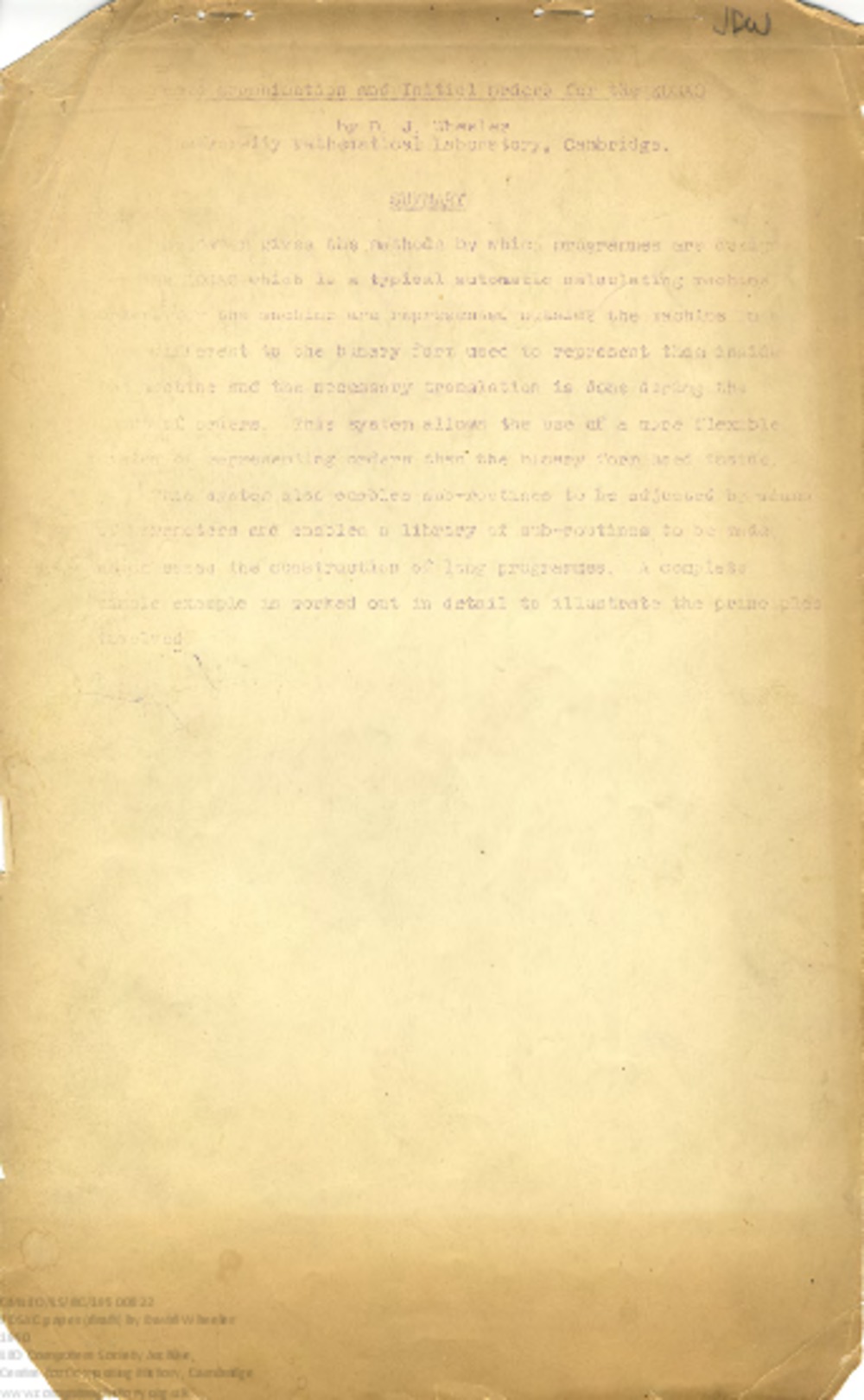
| Home > LEO Computers > Lyons Electronic Office (LEO) Archive > CMLEO/LS - LEO Comput ... s Society Collection > Research papers and publications > 59162 Wheeler, Progra ... for the EDSAC (draft) |
59162 Wheeler, Programme organization and initial orders for the EDSAC (draft)
| Home > LEO Computers > Lyons Electronic Office (LEO) Archive > CMLEO/LS - LEO Comput ... s Society Collection > Research papers and publications > 59162 Wheeler, Progra ... for the EDSAC (draft) |
|
Typescript draft of a research paper by David Wheeler, central member of the EDSAC team at the Cambridge University Mathematical Laboratory. According to the Royal Society, the paper was submitted by Wheeler to the Royal Society on 4th April 1950, and then published in the Proceedings of the Royal Society A, Volume 202, Issue 1071 (22 Aug 1950), pp. 573-589, jointly in the names of Wheeler and Douglas Hartree. The full text as published is available via the Royal Society website: Date : published 22 Aug 1950 Creator : Wheeler, David John Physical Description : 1 item (23 pages), paper; typescript with annotations; Extremely fragile paper and type faded in many places. Transcript : [Transcription of page 1, owing to extremely faded original. This Summary doesn't appear in the published text]
Programme Organisation and Initial Orders for the EDSAC by D.J. Wheeler
University Mathematical Laboratory, Cambridge
SUMMARY
This paper gives the methods by which programmes are designed
on the EDSAC which is a typical automatic calculating machine
Orders for the machine are represented outside the machine in a
form different to the binary form used to represent them inside
the machine and the necessary translation is done during the
input of orders. This system allows the use of a more flexible
system of representing orders than the binary form used inside.
This system also enables sub-routines to be adjusted by means
of parameters and enables a library of sub-routines to be made
which eases the construction of long programmes. A complete
simple example is worked out in detail to illustrate the principles
involved.Provenance : Archive References : CMLEO/LS/RC/19500822 , CCH LI 12.3 , DCMLEO20190307002-024 This exhibit has a reference ID of CH59162. Please quote this reference ID in any communication with the Centre for Computing History. |
 This document has been scanned and is available to view online.
Copyright David Wheeler and The Royal Society File Size: 3.04 MB
|









